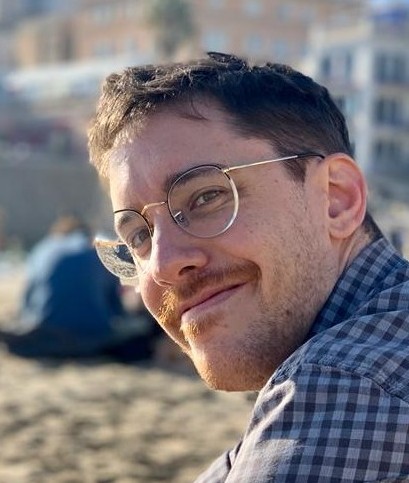Research
Maritime encounters and ancient navigation
As part of the Gothenburg Research Infrastructure in Digital Humanities (GRIDH), I lend my knowledge of agent-based modelling to the Maritime Encounters project, which aims at studying the importance of the sea for the social fabric during the Scandinavian Bronze Age (1700-500 BC) and earlier. My collaborators and I are attempting to establish likely navigation routes that allowed Scandinavian populations to maintain a large and vibrant trade network. We merge modern climatological data with naval engineering numerical models to infer how seafaring took place up to 4000 years ago. Additionally, I contribute to the interpretation of results, and - in a twist of my destiny as a theoretician - I take part in field experiments to test the performance of boats built using ancient methods (such as skin boats and logboats). I am also involved in the development of ideas and theoretical models to understand human connectivity between the late Neolithic and the Bronze Age.
Digital humanities
Among other things, my department at the University of Gothenburg specializes in the visualization of historical and cultural heritage data in space and time. Currently, I am one of the active developers behind the Multimodal Map tool developed at GRIDH, which was used to build - among other projects - Saint Sophia’s Inscriptions and the Etruscan Chamber Tombs portal. The former is a portal for the digital conservation and study of the graffitis on the walls of the Saint Sophia Cathedral in Kyiv; the latter is a portal for the exploration of visual data collected in and around the Etruscan tombs in San Giovenale, Italy. Currently, I am mostly responsible for the development of the backend and the database, while I am slowly learning a few principles in frontend development as well. I am also being formed in documentation techniques, especially 3D digitization techniques. Also at GRIDH, I am collaborating in a project where we analyse soundtracks in movies about conspiracy theories.
InfraVis
Through my position at GRIDH, I am employed at 10% as an Application Expert at InfraVis, the Swedish national research infrastructure supporting scientific advancement through the application of state-of-the-art visualization techniques. I am currently involved in outreach for scientific visualization, and in the past I have been employed in different projects, becoming both project owner and project manager of several projects within the infrastructure. This exposed me to the most disparate fields in research, from volcanology to nutritional sciences.
Addendum: Evolutionary biology
Before getting into digital humanities, I built an academic career studying population genetics, which can be considered as the mathematical theory upon which theoretical evolutionary biology is built. In my 8 years in the field (a PhD plus two postdocs contracts) I worked on different topics: in particular evolutionary rescue, isolation by distance and range expansions. Evolutionary rescue refers to when a population (loosely defined as a group of individuals exchanging genetic material) facing extinction survives due to a new beneficial mutation spreading in the population. Isolation by distance refers to a genetic pattern that can be seen when observing the individual DNAs of many different individuals of a population spread over a large territory: in general, one would expect that the farther away two indivduals can be found, the more genetic differences their genomes will harbor between themselves. Finally, range expansions occur when a population expands over a territory: this causes genetic changes at the front of the population expansion that we can quantify and study. In all these topics, my focus was in understanding the impacts of spatial structures (e.g. metapopulations) and dispersal on the evolutionary changes. Nowadays, I use this knowledge to understand cultural evolution.
I don’t consider myself a biologist anymore, but I will always harbor a deep interest for these topics.
